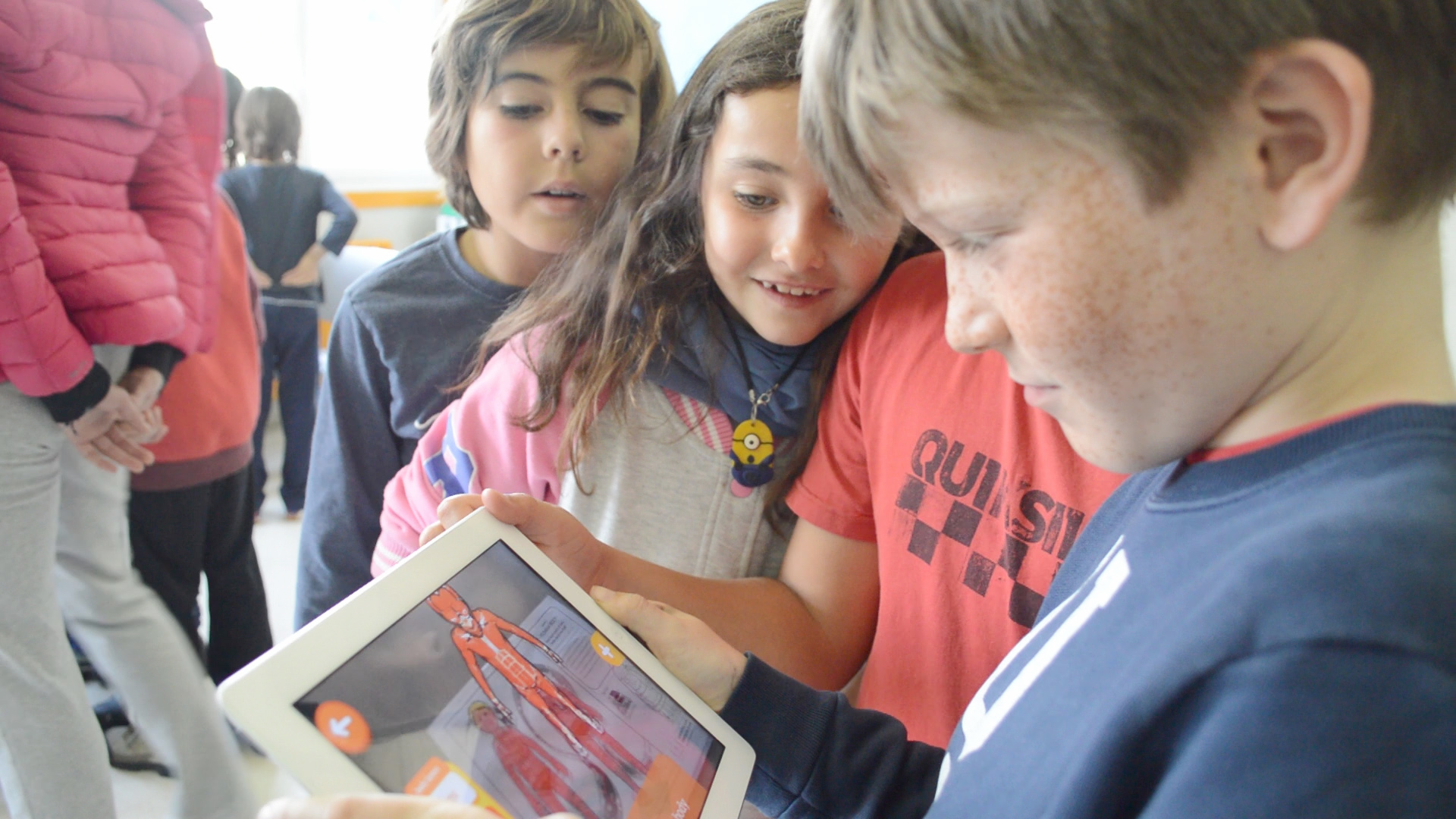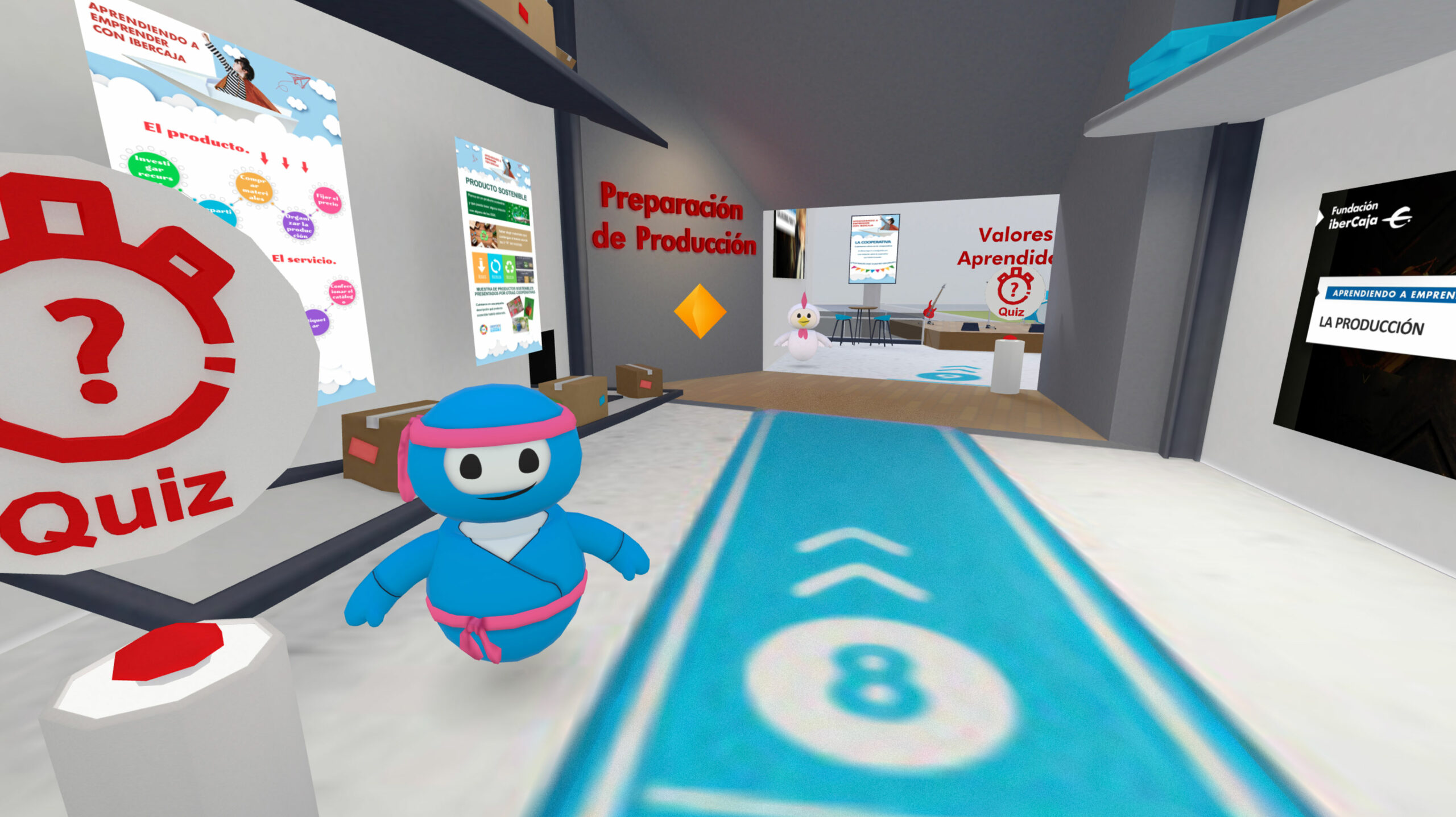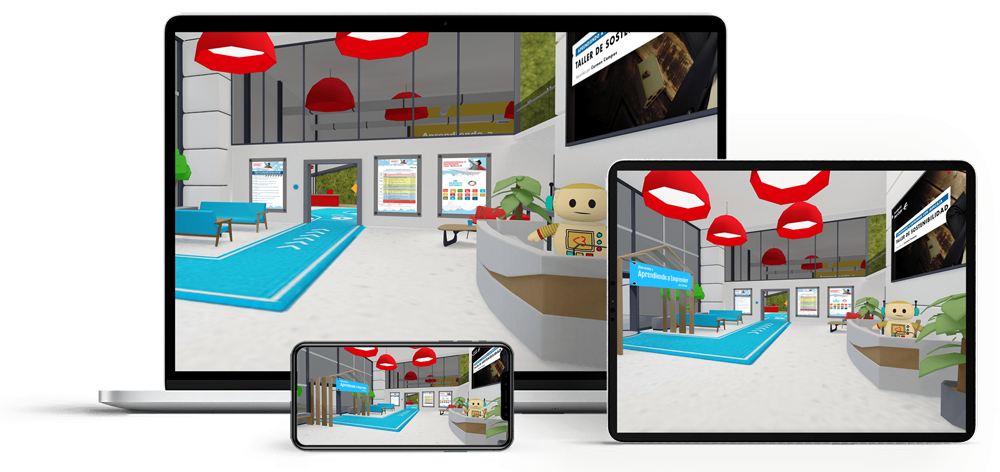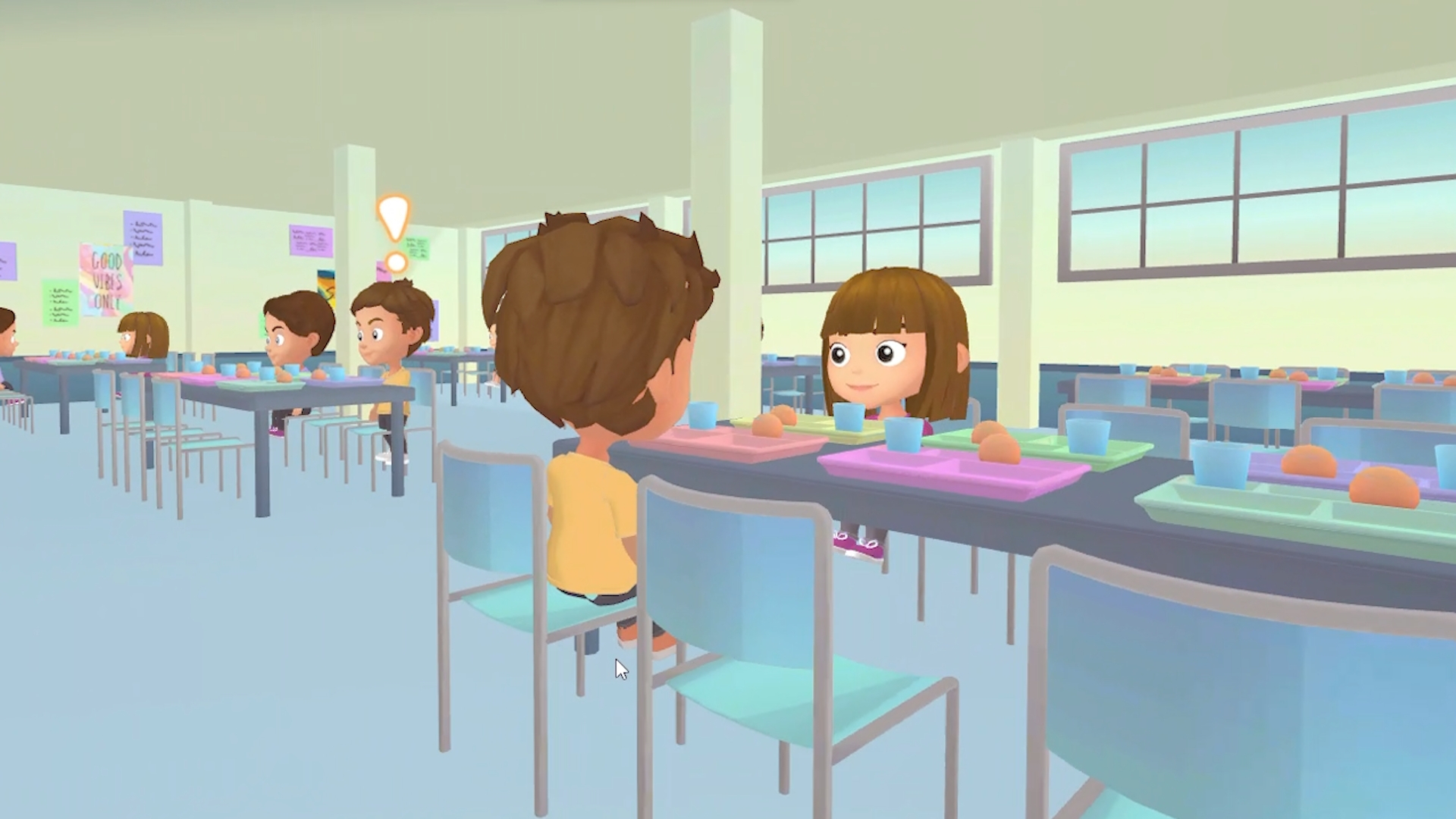Meet the 4 new trends in education
Education is one of the most important pillars of our society. And in this technological and digital world in which we live even more so. Knowing how to combine the basics of traditional learning with the new skills and abilities needed to develop in the digital era is essential..
So, in this article we are going to talk about how technology is enriching learning. From the integration of Artificial Intelligence and the experiences of Augmented Reality to the gamification and the hybrid learning, These innovations offer more personalized, interactive and immersive educational experiences.
Through examples such as Learning to undertake, KAI XR Platform y Chromville, we analyze how new technology tools are enhancing students' creativity, independence and skills, preparing them for the social and labor future.
Educational innovation: Technology for children
In the digital age, children are technological natives who learn best with interactive, adaptive and dynamic tools. Without neglecting the educational bases that allow the development of all the intelligences, thinking and creativity of children, we can develop educational experiences with new dynamics, strategies and technologies. A complete learning experience that makes it much more effective.
You may be interested in → How Technology Boosts Child Development: Practical Solutions for Parents
As discussed in more detail in this article - which we invite you to read carefully - The current educational scene is marked by the debate on the use of technology by children. Today everything is digital and children, the digital natives, are growing up in a world from which we cannot separate technology from educational content. However, parents, pediatricians, psychologists and teachers are increasingly aware of the impact that technology is having on children's development. Both positive and negative.
The challenge is to find the perfect balance. Because when technology is used with purpose and supervision, integrated in a coherent, positive and controlled way into the learning content, it can enrich children's education.. Preparing them for a more connected, digital and opportunity-filled future.
Take a look at our post: Advantages and disadvantages of Artificial Intelligence in education
Advantages of technology in children
The incorporation of technology in school classrooms brings multiple benefits that go beyond education as we know it. But also responsibilities on its controlled use, promoting the welfare and development of children. In a responsible way, the use of these tools not only improves learning, but also promotes autonomy and creativity. Among the main advantages are:
- Personalized learning: For example, the incorporation of the artificial intelligence, enhanced through the use of AI avatars, adapts content to the needs and rhythms of each child, ensuring a process of continuous individualized progress. In addition to making the experience something unforgettable, such as asking Miguel de Cervantes directly about his novels, as in the project Cervantes IA.
- Motivation and commitment: Tools such as the gamification turn learning into a fun and interactive experience, which makes learning much faster and with greater content retention. Through challenges, badges and rankings, children feel more motivated in learning, with the same mechanics as in video games, passing screens and levels by correctly completing the exercises.
- Digital preparationDevelops essential technological skills for their academic and professional future, in which each user will be familiarized from childhood with technology and its use and operation. Encouraging skills such as creativity and the development and resolution of current problems. As in the case of KAI XR Create, where they not only learn about the different ecosystems but also learn to design their own digital universes in 3D.
- Global accessOnline resources eliminate geographic barriers, allowing learning from anywhere. To provide opportunities to access high quality educational content, regardless of location or socioeconomic context. Democratizing learning and offering new possibilities for students of all ages and levels. For example, in the KAI XR educational platform, children can travel to Egypt, to space or to the seabed all through a single pair of glasses. Virtual Reality.
Do you want to go a little deeper? We invite you to read the Technology trends and children
Keys to incorporating technology in children's education
Boosting creativity
The technology in education is a powerful tool to awaken creativity in children. From classrooms that transport to the past or to other ecosystems, the possibility of asking someone from the past about what it was like to live in their time or seeing in 3D what you could only imagine before with abstract thinking. All of these experiences allow students to explore their ideas and express themselves in an innovative way.
The use of simulations and virtual environments fosters the use of experimentation without fear of error, while artificial intelligence offers customized challenges that stimulate the critical thinking and the creative problem solving. Thus, technology not only teaches, but inspires to create, imagine and transform the world.
Promoting independence
Educational technology allows children to take control of their own learning by providing them with interactive and customizable platforms that adapt to their pace. This fosters key skills such as self-management and accountability. In addition, tools such as guided tutorials and immediate feedback, via virtual avatars help children identify their strengths and areas for improvement, promoting a growth mindset. This autonomy not only improves their academic performance, but also prepares them to face future challenges with confidence and proactivity.
Improvement of learning skills
Technology enhances learning skills by providing innovative methods for assimilating knowledge. For example, tools such as the microlearning offer short and specific contents, ideal for keep the attention of students and improve retention of content.
In addition, the interactive platforms adapt the lessons to the pace of each child, fostering their autonomy. Skills such as critical thinking, problem solving and collaboration are also developed through online activities, preparing students for the academic and professional challenges of the future. An example of this can be found in the training program Aprendiendo a Emprender, developed by Fundación Ibercaja. which has a virtual campus where each classroom can go at their own pace completing the steps to create their own children's cooperative.
4 technology trends in education
As we have seen throughout this article, technology is transforming the education system. The projects and success stories presented, although they may seem very different, have in common that they follow one of the four technological trends presented below.
The use of Artificial Intelligence: Chatbots and Virtual Avatars
The educational chatbots and the virtual avatars are transforming teaching with dynamic and personalized interactions. Tools such as V-E-G-A, The new AI training platform, an innovative platform for AI training and virtual assistant development, is designed to answer questions and guide students in real time. In this context V-E-G-A Tutor is a clear example, which seeks to democratize access to training in new technologies thanks to artificial intelligence.
Also noteworthy is the Turrón project, with its focus on a virtual avatar for children. It has a Christmas storytelling feature that seeks to actively entertain the little ones during the vacations.
Gamification of learning
The gamification is associated with greater commitment, motivation, attention and interest on the part of students, regardless of their level of education. Thanks to its challenge/reward system, there is an incentive to give the best of oneself. In addition, student autonomy is encouraged and, when concepts are more complicated, learning through trial/error, logic and deduction games helps to internalize new knowledge in a much more effective and entertaining way.
Virtual Reality and Augmented Reality Experiences
The Virtual Reality and the Augmented Reality are taking education to a whole new level, enabling immersive experiences that bring students into worlds, eras and concepts that are difficult to explore in a traditional classroom.
An example of this innovation is the Chromville educational app, which uses Augmented Reality to bring to life the drawings painted by the children. Thus creating a highly interactive, visual learning environment. Not only does this approach make learning more engaging, but it also facilitates the understanding of complex concepts in a fun and accessible way.
Do you want to know more about AR educational experiences? We invite you to read Features and benefits of Augmented Reality in education
Hybrid learning: linking virtual and physical
The hybrid learning merges face-to-face teaching with virtual environments, providing a more flexible and dynamic educational experience. An outstanding example is the Learning to undertake which we have discussed above. This program combines classroom training with training in the virtual space, allowing students to acquire practical knowledge while interacting on online platforms. This modality promotes collaboration, creativity and skill development. in an accessible environment, ready to face the challenges of the future.
Cases and practical projects on trends in education
In addition to the aforementioned innovative projects such as KAI XR Platform y Chromville, There are other fascinating examples developed by Imascono of how new technologies are being applied in education.
In the field of mental health, especially in children and adolescents, there are technologies that are being used to address clinical tests in an environment designed for digital natives, a video game environment. This is the case of ApeTest, promoted by the A.P.E. Foundation and the Instituto de Investigación Sanitaria de Aragón (IIS Aragón).
Another project to be highlighted is the complete virtualization of the entire Rafa Nadal Academy, where, through its virtual environment, In this virtual tour, students, parents and interested parties can travel virtually to Manacor (Mallorca, Spain) to tour its facilities and discover with Rafa Nadal, Toni Nadal and the rest of the teaching staff all the methodology and values of the Tennis Academy.
Ultimately, each of these projects demonstrates how new technologies are improving an educational future more interactive, inclusive and personalized. Always focusing on the fact that technology is there to enrich educational programs, not to replace more traditional learning.
Do you have any questions or would you like to know more about how new technologies are transforming education? Do not hesitate to contact contact with us. We will be pleased to help you explore the best educational solutions for your institution.






